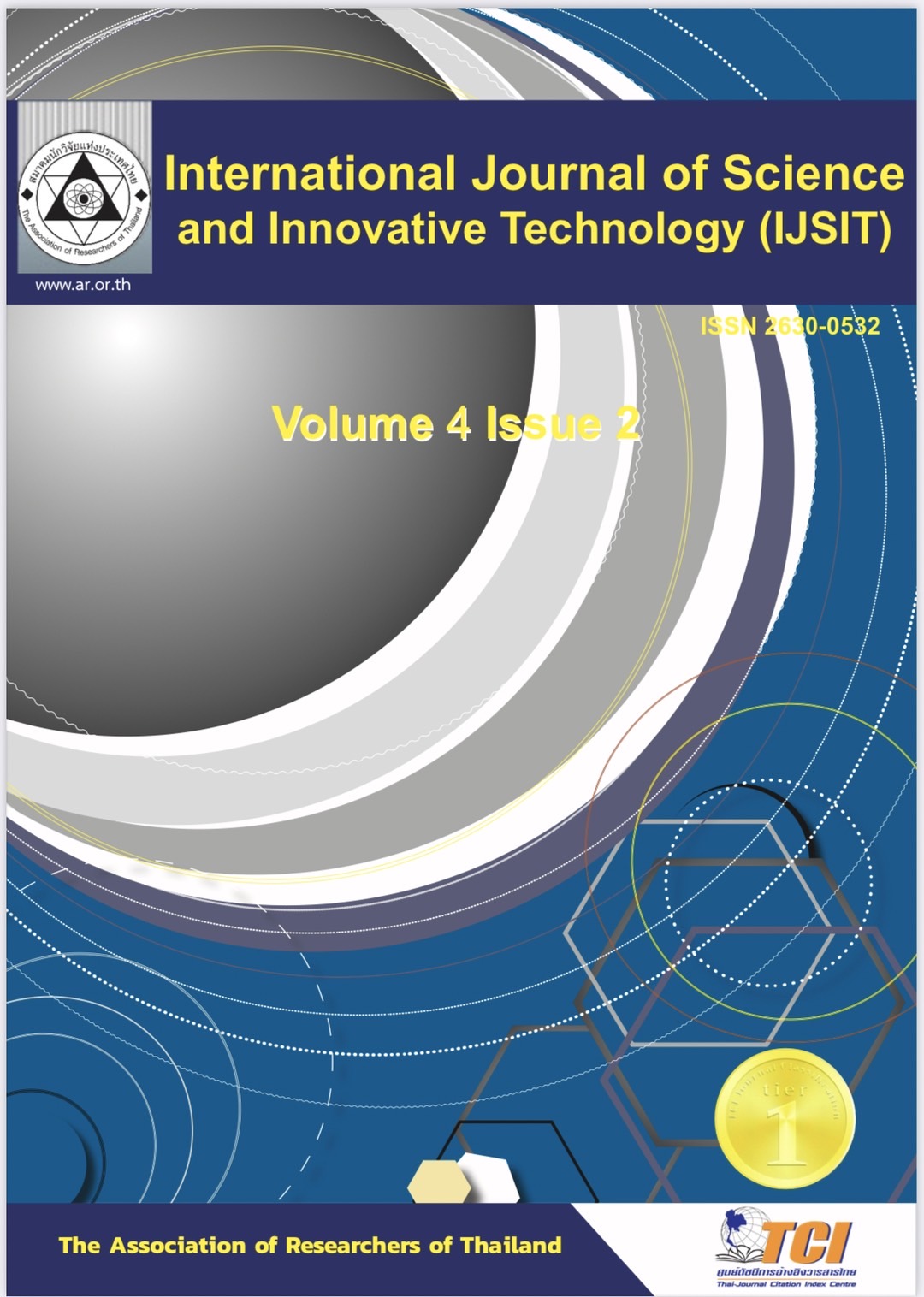Strategies for Developing the Innovative Prototype of an Environmental Friendly Market A Case Study of Ying Charoen Market
Main Article Content
Abstract
This article aims to 1) Study the needs of customers and community about the environment of Ying Charoen Market. 2) Create strategies of development prototype of an environmentally friendly market in a Case Study of Ying Charoen Market using a questionnaire with 400 users of Ying Charoen Market.
The results of the study indicate that 1) for the needs of customers and community about the environment of Ying Charoen Market, the data from questionnaires reveals a high level of demand regarding the development strategies of the market. The demand with the highest opinion level is about the infrastructure, followed by the administration. The overall demand for the development prototype of an environmentally friendly market is high. The demand with the highest level of opinion is about the energy, followed by the waste and the wastewater respectively. As for factors relating to the administration, the structure and the management affect the development prototype of an environmentally friendly market in all aspects, including wastewater, waste, and energy. Information derived from group discussion indicates the need in administration factors including installation of shop signs and product labels, road development, sewer, landscaping, solid waste collection, cleanliness maintenance, giving away cloth bags, and foam use reduction. The information derived also indicate the need for a prototype in developing an environmentally friendly market in terms of wastewater, waste, and energy while users and related parties of the Ying Charoen Market demand for the administration and market structure that facilitates the development of an environmentally friendly market in terms of wastewater, waste, and energy. 2) As for the strategy of the development prototype of the environmentally friendly market in a case study of Ying Charoen Market aiming to the growth and expansion of the market in an environmentally friendly manner and to be a model for fresh markets in other areas to be adapted to be environmentally friendly markets, it consists of 3 strategies including 1) wastewater strategy 2) waste strategy and 3) energy strategy.
Article Details
References
EECM (Electrical Equipment Consumption Management) method. Case study: Tabriz Historical
Bazaar.In First International Comprehensive Competition Conferance Engineering Sciences
in Iran. 21 May 2016.
ChiomaIfeyinwa M adueke and Mmaduabuchukwu M kpado. (2020).Prospects for and Constraints to
Investment in Environmentally Friendly Infrastructure in Western Nigeria.Canada : United
Nations University.
Hilma Tamiami Fachrudin, Khaira Amalia Fachrudin andWahyu Utami. (2019).Education Activities to
Realize Green Campus. In Asian Social Science. 15(8), 38-44.
Levidow Les. (2014). Eco-efficiency improvements in industrial water-service system: assessing
options with stakeholders.Water Science and Technology, 69(10), 2113-2121.
Valerie Guillard, Sébastien Gaucel, Claudio Fornaciari, Helene Angellier-Coussy, Patrice Bucheand Nathalie
Gontard.The Next Generation of Sustainable Food Packaging to Preserve Our Environment in a
Circular Economy Context. in Frontiers in Nutrition. 5(121), 2-13
Yupin Watcharakawin. (2015). Solid waste management according to Buddhist principles of
residents at Thung Hua Municipality, Thung Hua Chang District Lamphun Province.
Thesis of Master of Buddhist Degree. Mahachulalongkornrajavidyalaya University.
Somsak Meenakorn. (2012). A Study of Appropriate Energy Management Models in Amphawa District.
Research. Suan Sunandha Rajabhat University.
Chatchai Inthasung and Paweena Atnawang. (2012). Research in the Prototype of Marketing
Strategy for developing community enterprise products for sustainable national trade.
(A case study: Community products with below 3 stars in Wang Nam Khiao District Nakhon
Ratchasima Province). Research. Faculty of Business Administration, Rajamangala University
of Technology Isan.
Boonlert Matanakhun. (2016). The Development Model of the Attractive Fresh Market at Fao Rai
Municipality, Fao Rai District, Nong Khai Province.
Thesis of Master of Hygiene Sciences. Mahasarakham University.
Pongthep Suwannawara, Wasana Phanurak, Rachan Thiraphittayatrakul, Kachakrit Sukcharoen,
Netnapha Phongpetch, and Manaswee Panichnok. (2012). Waste and Wastewater
Management with Community Involvement in Nakhon Ratchasima Municipality.
Research in Biology Department. Institute of Science, Suranaree University of
Technology.
Naparat Waicharoen, Saranya Panpuet, Roki Masae and Wanwimol Srikong (2018). Management
of Solid Waste from the Fresh Market and Green Waste Materials within Prince of
Songkla University, Pattani Campus. Academic Journal. Industrial Technology.14(3), 33-43.
Phakaporn Fangsin, Chirawit Rattanaphan, and Weerawat Unsanaeha. (2019). Guidelines in
Reduction of Wastage of Food and Food Waste in Thailand's Wholesale Sector. A Case
study of the Thai sea market in Samut Sakhon Province in the 7th National Academic
Conference in Interinstitutional Science and Technology (Page 501-507). Pathum Thani.
Suparinya Limwananon(2016).Factors Affecting Behavior of Electricity Energy Saving in the
Workplace of Employees of the Leopard Medical Brand Company. Thesis of Master of
Business Administration, Silpakorn University.


